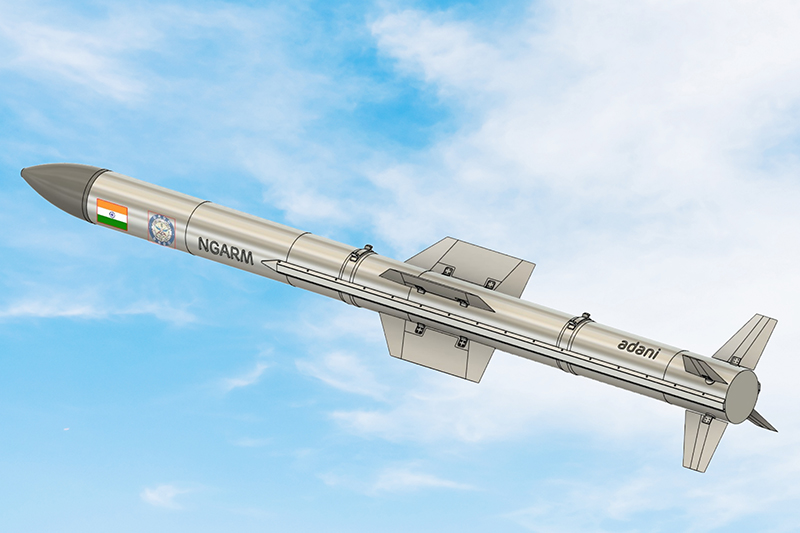SOURCE: RAUNAK KUNDE / NEWS BEAT / IDRW.ORG

India’s Defence Research and Development Organisation (DRDO) is planning an Accelerated Ageing Test (AAT) for the New Generation Anti-Radiation Missile (NGARM), also known as Rudram-1, to estimate its shelf life. The test will be conducted at elevated temperatures of +60°C on the missile’s propulsion system and propellant cartons. Such tests are crucial in determining the long-term reliability and operational readiness of the missile under varying environmental conditions, especially in extreme climates, which is a key requirement for modern defence systems.
Accelerated Ageing Tests are a standard procedure in missile and ammunition development, simulating long-term environmental impacts within a shorter timeframe. The goal of AAT is to assess the shelf life and stability of the missile’s propulsion system and propellant under stressful conditions. By subjecting these critical components to elevated temperatures like +60°C, DRDO can predict how well the missile’s propulsion and propellant systems will hold up over time when exposed to real-world conditions, such as high heat or storage in tropical climates.
The findings from the AAT will provide valuable data on the degradation rate of materials used in NGARM and give insights into its long-term storage capabilities. This, in turn, helps ensure that the missile remains reliable when needed and minimizes the risk of failures due to material fatigue or chemical breakdown over time.
The NGARM, commonly referred to as Rudram-1, is India’s first indigenously developed anti-radiation missile. Designed and developed by DRDO, this air-to-surface missile is specifically crafted to neutralize enemy air defence systems by targeting and destroying radar installations, jammers, and other electronic warfare platforms. These systems are critical components of a country’s air defence, as they provide early warning and tracking of incoming threats like aircraft, missiles, or drones.
The Rudram-1 is primarily intended for use by the Indian Air Force (IAF), and it can be integrated with the IAF’s Su-30MKI fighter jets. Its primary function is to detect, locate, and destroy enemy radars or other radiation-emitting sources by homing in on their signals. Once these systems are neutralized, enemy air defence networks are significantly weakened, allowing the IAF to conduct operations with reduced risk of interception.
NOTE : Article cannot be reproduced without written permission of idrw.org in any form even for YouTube Videos to avoid Copy right strikes. Websites doing illegal reproductions will get DMCA and Legal Notices.